Intro
Discover how exercise can trigger Sports Induced Asthma, affecting athletes with respiratory issues, and learn about symptoms, diagnosis, and treatment options for asthma management during physical activity and athletic performance.
Exercise and physical activity are essential for maintaining a healthy lifestyle, but for some individuals, engaging in sports can trigger asthma symptoms. Sports-induced asthma, also known as exercise-induced bronchospasm (EIB), is a condition where physical activity triggers asthma-like symptoms in individuals who may or may not have a pre-existing asthma diagnosis. The importance of understanding sports-induced asthma lies in its potential to impact athletic performance, overall health, and quality of life. It is crucial to recognize the signs and symptoms, understand the causes, and learn how to manage and prevent episodes to ensure safe and enjoyable participation in sports.
The prevalence of sports-induced asthma is significant, affecting approximately 10-20% of athletes, with some studies suggesting that up to 50% of elite athletes may experience some degree of exercise-induced bronchospasm. This condition can affect anyone, regardless of age, fitness level, or athletic ability, and can be particularly problematic for individuals who participate in endurance sports such as distance running, cycling, or swimming. The symptoms of sports-induced asthma can be similar to those experienced by individuals with chronic asthma, including wheezing, coughing, shortness of breath, and chest tightness. However, the triggers and underlying mechanisms may differ, making it essential to understand the specific characteristics of this condition.
The relationship between sports-induced asthma and athletic performance is complex, and understanding the underlying mechanisms is crucial for developing effective management strategies. When an individual with sports-induced asthma engages in physical activity, their airways constrict, leading to reduced airflow and increased resistance. This can result in decreased athletic performance, as the individual may need to slow down or stop to catch their breath. Furthermore, if left unmanaged, sports-induced asthma can lead to more severe consequences, such as respiratory failure or even death. Therefore, it is essential to recognize the signs and symptoms, understand the causes, and develop effective management strategies to ensure safe and enjoyable participation in sports.
Causes and Risk Factors
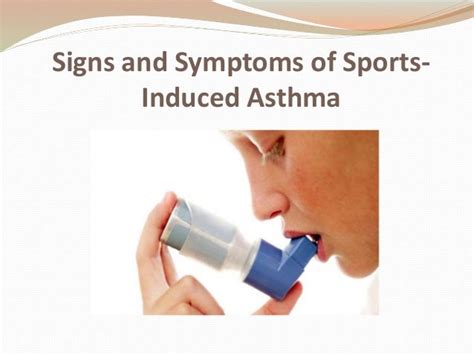
The causes of sports-induced asthma are multifactorial, involving a combination of environmental, physiological, and genetic factors. One of the primary triggers is the inhalation of cold, dry air, which can cause the airways to constrict and become inflamed. Other factors, such as air pollution, high altitude, and respiratory infections, can also contribute to the development of sports-induced asthma. Additionally, individuals with a family history of asthma or allergies may be more susceptible to developing sports-induced asthma. Understanding the causes and risk factors is essential for developing effective prevention and management strategies.
Environmental Factors
Environmental factors, such as air pollution, temperature, and humidity, can play a significant role in triggering sports-induced asthma. For example, exercising in areas with high levels of air pollution, such as near busy roads or industrial areas, can increase the risk of an asthma episode. Similarly, exercising in cold, dry air can cause the airways to constrict, leading to asthma-like symptoms. Understanding the impact of environmental factors on sports-induced asthma can help individuals take steps to minimize their exposure and reduce their risk of an asthma episode.Physiological Factors
Physiological factors, such as respiratory function and cardiovascular health, can also contribute to the development of sports-induced asthma. For example, individuals with pre-existing respiratory conditions, such as chronic obstructive pulmonary disease (COPD), may be more susceptible to developing sports-induced asthma. Additionally, individuals with cardiovascular disease or other health conditions may need to take extra precautions when engaging in physical activity to minimize their risk of an asthma episode.Symptoms and Diagnosis
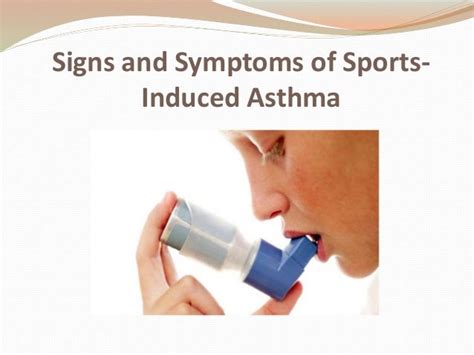
The symptoms of sports-induced asthma can vary in severity and may include wheezing, coughing, shortness of breath, chest tightness, and fatigue. In some cases, individuals may experience a dry, hacking cough or a feeling of tightness in the chest. The symptoms can occur during or after exercise, and may be triggered by specific activities, such as running or swimming. Diagnosing sports-induced asthma can be challenging, as the symptoms may be similar to those experienced by individuals with chronic asthma. A comprehensive medical history, physical examination, and diagnostic tests, such as spirometry and methacholine challenge, can help confirm the diagnosis.
Diagnostic Tests
Diagnostic tests, such as spirometry and methacholine challenge, can help confirm the diagnosis of sports-induced asthma. Spirometry measures lung function, including the amount of air that can be inhaled and exhaled, and the rate at which it can be done. The methacholine challenge test involves inhaling increasing amounts of methacholine, a substance that can trigger airway constriction, to assess the sensitivity of the airways. These tests can help healthcare providers diagnose sports-induced asthma and develop an effective treatment plan.Management and Prevention
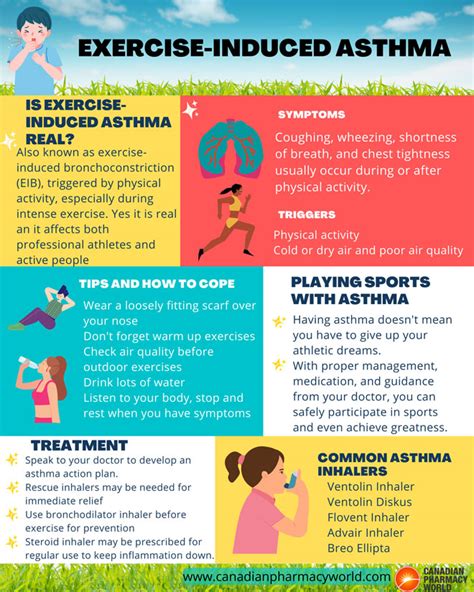
Managing and preventing sports-induced asthma requires a comprehensive approach that includes medication, lifestyle modifications, and environmental changes. Medications, such as bronchodilators and corticosteroids, can help control symptoms and prevent episodes. Lifestyle modifications, such as warming up and cooling down slowly, staying hydrated, and avoiding triggers, can also help reduce the risk of an asthma episode. Environmental changes, such as exercising in areas with clean air and avoiding high-pollution areas, can also help minimize the risk of an asthma episode.
Treatment Options
Treatment options for sports-induced asthma include medication, lifestyle modifications, and environmental changes. Medications, such as bronchodilators and corticosteroids, can help control symptoms and prevent episodes. Lifestyle modifications, such as warming up and cooling down slowly, staying hydrated, and avoiding triggers, can also help reduce the risk of an asthma episode. Environmental changes, such as exercising in areas with clean air and avoiding high-pollution areas, can also help minimize the risk of an asthma episode.Living with Sports-Induced Asthma
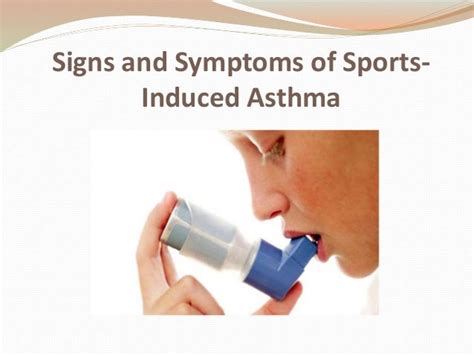
Living with sports-induced asthma requires a comprehensive approach that includes medication, lifestyle modifications, and environmental changes. Individuals with sports-induced asthma can lead active and healthy lives by taking steps to manage their condition and prevent episodes. This includes working with healthcare providers to develop a treatment plan, staying informed about their condition, and taking steps to minimize their risk of an asthma episode. By taking control of their condition, individuals with sports-induced asthma can enjoy participating in sports and physical activity while minimizing their risk of an asthma episode.
Coping with Sports-Induced Asthma
Coping with sports-induced asthma can be challenging, but there are several strategies that can help. This includes staying informed about the condition, working with healthcare providers to develop a treatment plan, and taking steps to minimize the risk of an asthma episode. Additionally, individuals with sports-induced asthma can benefit from joining support groups, talking to friends and family about their condition, and seeking professional help when needed.Conclusion and Future Directions
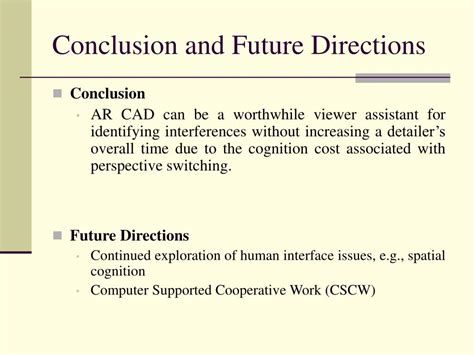
In conclusion, sports-induced asthma is a common condition that can affect anyone, regardless of age, fitness level, or athletic ability. Understanding the causes, symptoms, and management strategies is essential for developing effective prevention and treatment plans. By taking control of their condition, individuals with sports-induced asthma can enjoy participating in sports and physical activity while minimizing their risk of an asthma episode. Future directions for research and treatment include developing more effective medications, improving diagnostic tests, and increasing awareness about the condition.
What is sports-induced asthma?
+Sports-induced asthma, also known as exercise-induced bronchospasm (EIB), is a condition where physical activity triggers asthma-like symptoms in individuals who may or may not have a pre-existing asthma diagnosis.
What are the symptoms of sports-induced asthma?
+The symptoms of sports-induced asthma can vary in severity and may include wheezing, coughing, shortness of breath, chest tightness, and fatigue.
How is sports-induced asthma diagnosed?
+Diagnosing sports-induced asthma can be challenging, but a comprehensive medical history, physical examination, and diagnostic tests, such as spirometry and methacholine challenge, can help confirm the diagnosis.
What are the treatment options for sports-induced asthma?
+Treatment options for sports-induced asthma include medication, lifestyle modifications, and environmental changes, such as warming up and cooling down slowly, staying hydrated, and avoiding triggers.
Can individuals with sports-induced asthma participate in sports and physical activity?
+Yes, individuals with sports-induced asthma can participate in sports and physical activity, but it is essential to take steps to manage their condition and prevent episodes, such as working with healthcare providers to develop a treatment plan and taking medication as prescribed.
We hope this article has provided you with a comprehensive understanding of sports-induced asthma, its causes, symptoms, diagnosis, management, and prevention. If you have any further questions or concerns, please do not hesitate to comment below or share this article with others who may benefit from this information. Additionally, if you have personal experiences with sports-induced asthma, we would love to hear about them and learn from your experiences. By working together, we can increase awareness about this condition and help individuals with sports-induced asthma lead active and healthy lives.
